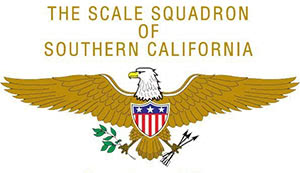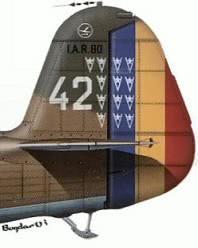Each Month in our Newsletter, our editor pics a plane, puts a pic of it in the newsletter, and we guess what it is at that month’s meeting This month’s plane is unusual, cool, and some of our members got it right!
And drumroll……………. Here’s the info about this month’s plane!
IAR 80 no. 42. of Grupul 8 flown by lt. av. Ion Micu in Summer 1941. Micu was the top-scoring IAR 80 pilot during this early stage of the war.
Romania has a strong aeronautic tradition reaching back to the beginning of the 20th century. In the early days of aviation, three Romanians left their mark in the world’s aviation history: Traian Vuia, Aurel Vlaicu and Henri Coandă. All three of them built original aircraft, showing remarkable innovating potential, way ahead Romania’s economic possibilities. Vuia built and flew the first automobile-airplane hybrid ever – the Vuia 1 – lifting above the ground with its own powers on the 18th of March 1906, near Paris. The Vlaicu 1 was unique in its tandem propeller layout, reminiscent of the later Do-335. The plane piloted by Aurel Vlaicu himself received five prizes at the 1912 international aviation contest in Aspern-Vienna. Henri Coandă, son of a Romanian general, is the father of the jet propulsion and the first constructor that built an aircraft “without propeller” – flown at The Second International Aeronautical Exhibition in Paris, October 1910.
With such pioneers in world aviation it is perhaps no coincidence that in 1938 the Romanians quickly manage to construct a fighter aircraft that become famous, and could compare with the best of the world at that time. It was called IAR 80. IAR stands for “Industria Aeronautică Română” (The Romanian Aeronautical Industry), a manufacturing plant located in Braşov (200 km north from Bucharest). Nobody really knows where the number 80 comes from. In IAR tradition, aircraft were usually numbered by the year of their introduction.
The end of World War I saw the foundation of the Romanian national state. Romania entered the war as part of the Entente, but soon managed to gain neutrality which lasted for two years until 1916. This year, Romania joined France, Britain, Russia and Italy in war, with a view to liberate the Romanians from under Austro-Hungarian rule. After taking its heavy share of the war, Romania managed to complete its national territory in 1919, including the territories previously governed by Russia (Bessarabia) and those under Austro-Hungarian rule (Transylvania, Banat and Bukovina). The economic climate created in the independent state lead to development of domestic aeronautic industry. Plane manufacturing started, initially relying on various foreign licenses. Romania maintained a special relationship to Poland, and technical expertise acquired through license-manufacturing of PZL P.11 and P.24 fighters turned out to be pivotal for future construction of Romanian’s own fighter. As can be easily noted, the tail of the IAR 80 was inspired by the similar part of the PZL P.24. However, the remainder of the airframe was of Romanian design. Initially the project relied on a German Junkers Jumo 211 Da as power plant. This engine, or rather its unavailability, soon became the source of multiple delays in the project. It was only solved when the initial idea was abandoned in favour of the IAR 14K engine. The prototype achieved maximum speed of 510 km/h which was very good for that time. The armament comprised of 4 wing-mounted Belgian Browning FN machine guns of 7.62 mm calibre. In time their number increased to 6.



